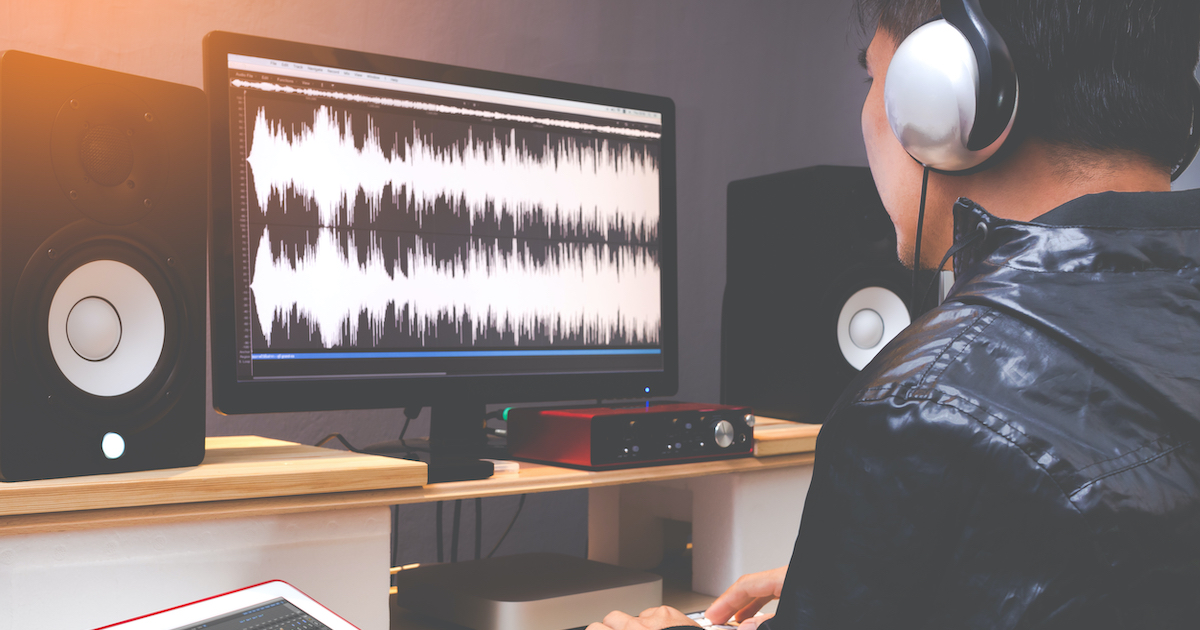Knowing how to truly assess a voice actor’s performance is very important. Why? Well, while you’re reading this for the next few minutes, let’s imagine you’re a business owner who’s busy ramping up your efforts for the launch of a major marketing campaign.
You’re releasing a great new product, and your copywriter has come up with an awesome voice over script. Late last week you posted the project on Voice123, requested 50 proposals, and all the auditions are in.
Armed with headphones and a steaming cup of coffee, you’re ready to listen to the voice overs one by one and make your choice.
Simple, right?
Perhaps not.
How to truly assess a voice actor’s performance may seem simple enough, but it actually isn’t. Here’s why and what you need to listen out for as you click through your stack of audition proposals.

Just a moment — first, let’s backtrack a little.
How well did you brief?
It may come as a surprise, but clients don’t always know what they want before posting their projects. It’s a bit like grabbing a shotgun, shooting from the hip, and hoping you’ll hit a distant rabbit hopping into a hole. Chances are pretty slim.
If you do know exactly what you want and you did provide a comprehensive brief as part of your project submission, all the auditions now listed on the computer screen in front of you should fall within its parameters. This will make your choice a lot easier because you’ll be able to focus on each voice actor’s nuanced interpretation of your script. There’s nothing worse than frustration because so many of the reads sound way off the mark.
If the majority of reads you received aren’t what you were hoping for, go back and check your brief carefully. Maybe you left out something important. Maybe you forgot to convey the emotion you required. Rather start over and resubmit the project.
Voice actors aren’t mind-readers and they do need direction no matter how seasoned and professional they are. The more descriptive you are in your project brief, the more likely the actors will provide you with the vocal performance you want.
Moving on.
Storytelling
No matter what you’re selling, if there’s voiceover involved, you’re storytelling. Whether the voice over is a 10-second tag or a 2-minute narrative, you want your target audience to resonate with it, and react positively. We humans are suckers for stories; tell a good one, and we’re hooked.

In the days of yore — and we’re using the term lightly as a reference to the pre-interwebs era — voice actors subscribed to certain mannerisms when they read a script. It was an affected style of presentation that has subsequently become known as ‘announcery’. Adjectives associated with it are ‘stiff’, ‘stilted’, ’preachy’, ‘exaggerated’, ‘and ‘fake’. It was all about dramatic salesmanship if you were a radio announcer doing voice overs back then. Times have changed and public tastes along with them.
Unless you’re specifically aiming for a script interpretation that needs to reflect sarcasm, irony, or a brash, over-the-top kind of vibe, audiences expect voice overs to talk to them, not at them. It’s an important distinction that can make or break a marketing campaign. Of all the tips on how to truly assess a voice actor’s performance, this may be the most important one of all.
Even if you have impactful visuals in your product video, more often than not, the actor’s read is what captures your target audience’s collective heart and mind — and lingers there long after they’ve forgotten the visuals. Great vocal performances become a memory as easily as a tuneful song does. It’s a fact worth remembering.
The Performance:
When listening to each voice actor’s interpretation of the script, consider the performance-defining elements listed below. Purpose is mission-critical. Once a voice becomes associated with your product or service — as it will if it repeatedly advertises what you’re selling — it quickly gets regarded as your brand voice and a reflection of your brand personality. Choose wisely.
Tonal elements
- Pitch can be either high or low. A high voice might grab attention quicker than a low voice but it will also get irritating more quickly. A low voice is usually more soothing than a high voice. Gender influences pitch as well. The power of association is fairly prescriptive, so whether a low male voice or higher female voice works better for you is usually product or service dependent.
- Timbre gives a voice its tonal color and uniqueness. Every voice has its own distinctive and distinguishing timbre, so take that into account when making your decision. Expressive, characterful voices are inevitably more memorable than mundane, everyday voices, although everyday voices are wonderful at capturing boy-next-door, girl-next-door, or pal-in-the-pub-type voice overs.
- Intonation, like cadence, is the melody of language; the way a voice rises and falls when speaking. It’s used to communicate intention and emotion and serves as vocal punctuation. Intonation adds dynamics to a voice over and makes it more interesting to listen to.
Volume, rhythm & speed
- Clarity, like articulation, is about comprehension. A voice over will be wasted if the audience cannot follow every word you want them to hear — especially if the audio includes an accompanying musical soundtrack and/or sound effects. The clarity and articulation of a voice largely determine whether it will cut through the surrounding clutter.
- Volume is loudness and is important because it influences both perception and acceptance of what’s being said. Voice overs that yell are less likely to be appreciated by your audience, so be wary of a voice over that sounds too loud.
- Pace and clarity go hand in hand. A voice over script that’s read too fast is little more than gibberish and an audience will lose interest in your message because of it. As a general rule, a good pace will allow a voice actor to read about 120 words a minute.
- Rhythm. Language has rhythm just as music does. Scripts that have an inherent rhythm are not only easier to read, they’re also easier to listen to. We’re not referring to iambic singalong, childlike rhymes in this instance, of course. Language that encompasses rhythm creates a sense of movement that’s instantly more memorable.
Human elements
- Pauses. Never undervalue them. Ever. Pauses during a read create expectation — or tension — and they make your listener listen more closely. Pauses also allow a listener to absorb and process what has just been said; a voice over mustn’t overload a listener with rapid-fire information. In the end, info-overload will result in your listener remembering nothing.
- Breaths. It seems to have become accepted voice over practice to edit out every breath an actor takes while reading a script, and it’s actually unfortunate. While removing breaths is fine in 30-second reads, longer reads will start sounding odd if the voice actor never seems to breathe. The reason is patently obvious: we expect a speaker to breathe because we all do. When they don’t, we subconsciously start wondering why they didn’t rather than listening to the read. Ultimately, that can dilute the impact of your message. Breaths create natural pauses, too — and can be used for emphasis. Please don’t underestimate the power of a well-timed breath in a voice over!
Technical elements
On the technical side of assessing a voice actor’s performance, there are two things you need to listen out for in particular:
- Over-compression. Compression reduces the dynamics of a voice by processing it in such a way that the loud parts sound softer and the soft parts sound louder. That’s perfectly acceptable when the goal is to even out the volume of a voice, but it can become problematic when over-compression makes the voice sound so up-close and claustrophobic it’s almost spitting in your ear. Voice actors like using compression because it adds punch and body to their vocal delivery, but it also makes a voice sound unnatural if overdone. It can destroy transparency and intonation.
- Editing. Some voice actors edit out their mistakes and breaths so sloppily that they cut out the initial attack of a subsequent word or interrupt the overall rhythm of the read. This can make a phrase or sentence jar or sound robotic — a lot like text-to-speech. Bad editing can completely ruin an otherwise great read.

Note: All the performance-defining elements mentioned above boil down to one thing:
Believability.
The true art of storytelling relies on the suspension of disbelief and no matter how long or short your script is, the actor providing the voice over must be convincing and trustworthy enough to make the members of your target audience believe what they’re being told. Otherwise, there’s no point, is there?
With so much riding on believability, you can’t fake it till you make it; your audience isn’t stupid and they’ll find you out sooner rather than later. A hard-earned reputation is very easy to lose in today’s searing social media environment, so don’t put it at risk with less than stellar messaging.
And now that you know how to truly assess a voice actor’s performance, may your marketing campaign be a huge success!






